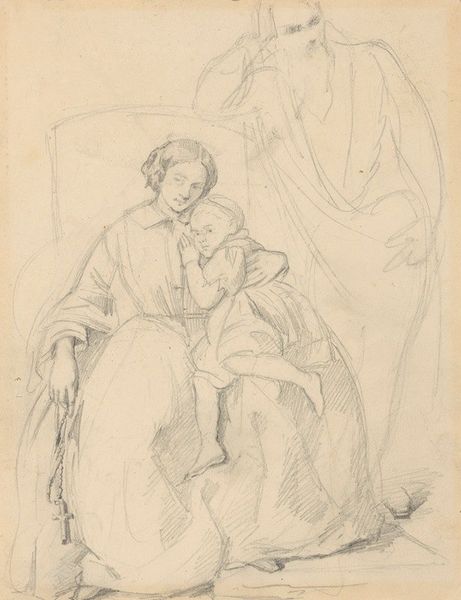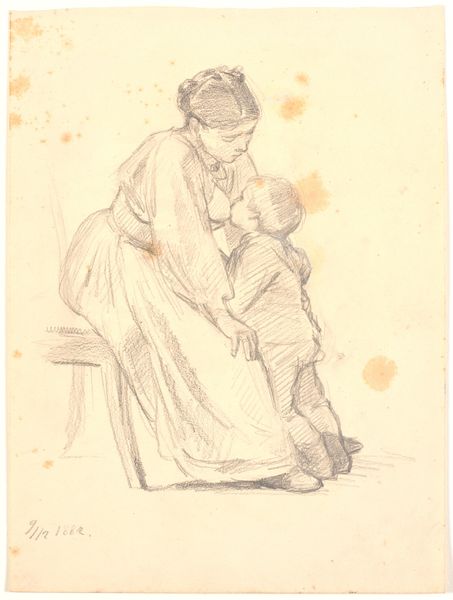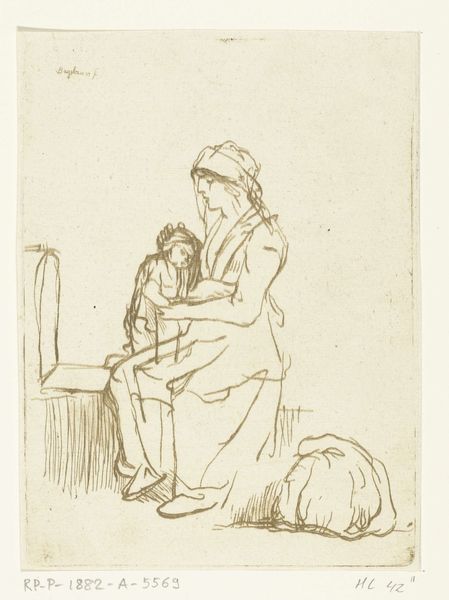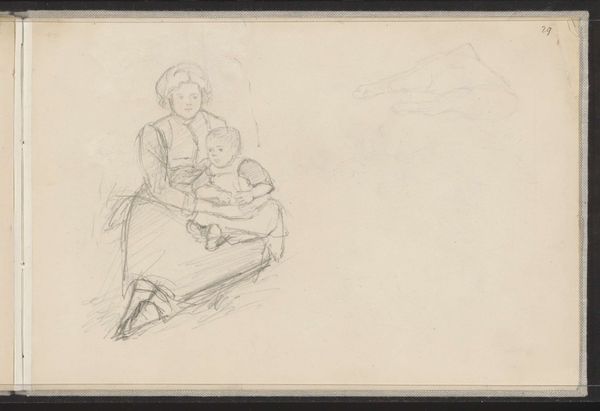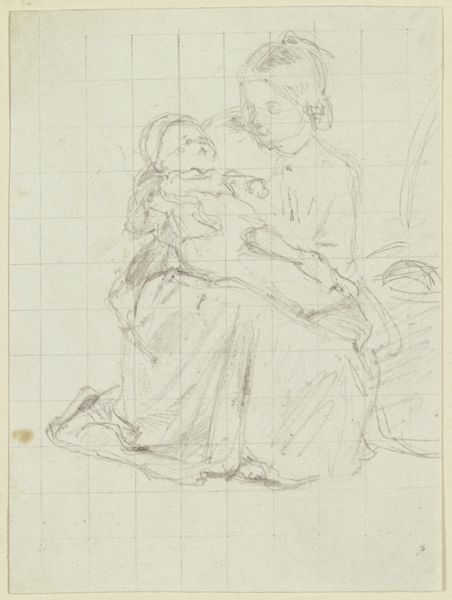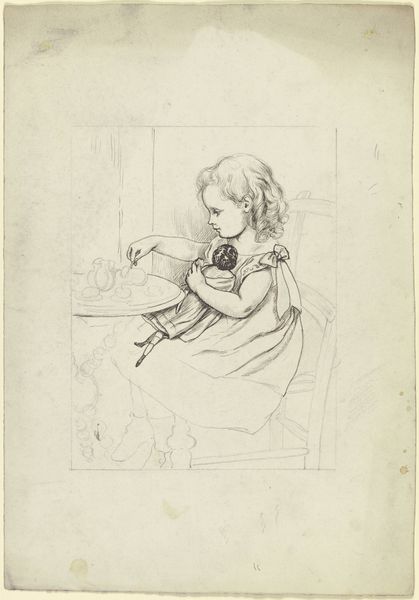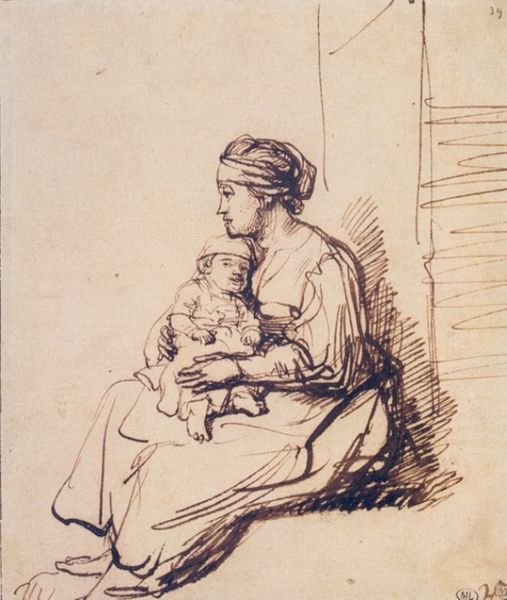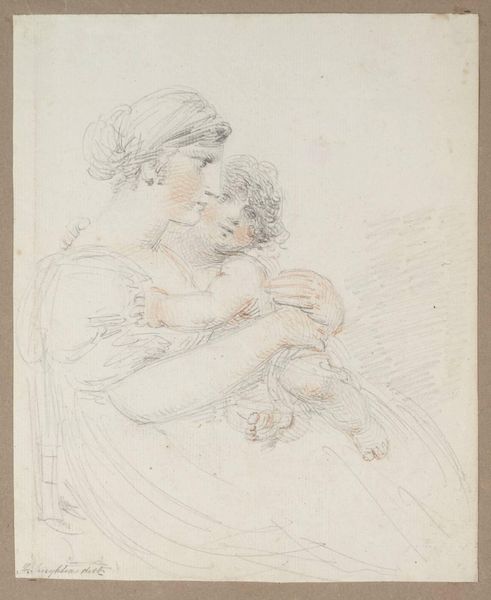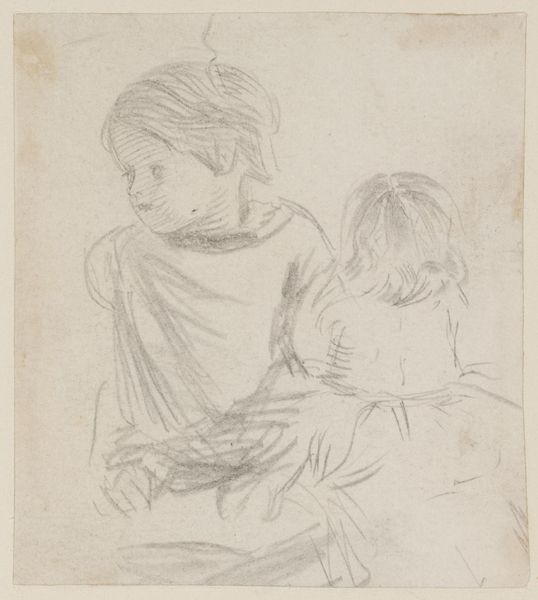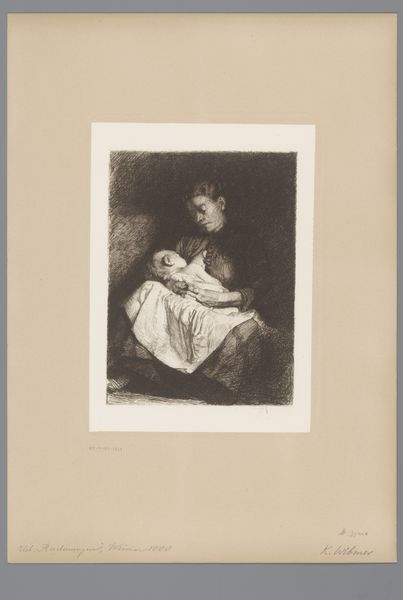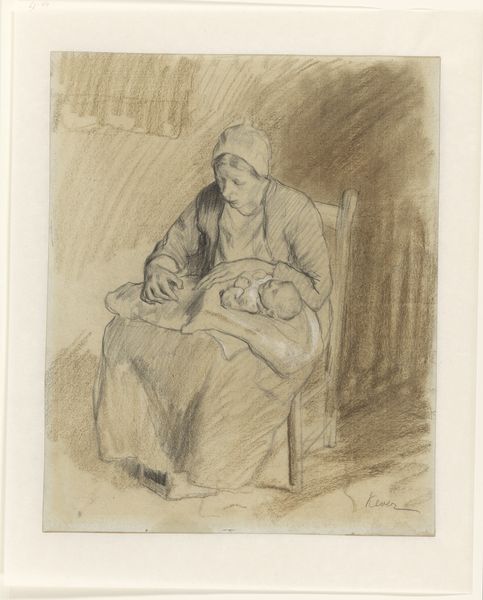
Sitzende Frau, dem auf ihrem Schoß liegenden Kind die Brust gebend c. 1770 - 1774
0:00
0:00
Copyright: Public Domain
Curator: The immediacy is striking. This drawing feels so intimate, almost like witnessing a private moment. Editor: And unfinished, wouldn’t you say? A pale graphite on paper sketch by Georg Melchior Kraus dating from about 1770-1774, depicting a mother nursing her child. Look how softly the artist renders the forms of the mother and child; you can see the rapid strokes of the pencil at play here. Curator: Absolutely, and the fragility of the line work speaks to a specific visual language that links motherhood with notions of innocence, nurture, and even a kind of delicate sacrifice, evoking religious imagery like the Madonna and Child. Kraus captures the iconography of maternal love. Editor: Do you see that ghost image there to the side? It is like the artist reusing the precious paper, planning another design with a family. Look closely and one can almost decipher a woman's figure. It’s also interesting how the bareness of the support and the limited strokes create this idea of ‘frugality’ while depicting intimacy; a mother providing food from her body. Curator: It certainly reflects societal values regarding both resourcefulness and maternity during that time. Feeding as an expression of care. Editor: These are likely studies or sketches meant for a larger painting; however, this piece of paper now takes on a life of its own by bearing the tool marks of pencil strokes; what would become this genre scene? Curator: Yes! We see both the public role of motherhood but then, thanks to the medium itself, it presents almost as a secret sketch or an insider’s look into a larger symbolic representation of mothers during the Rococo era. Editor: So this drawing made of a simple piece of graphite transforms not only into the theme of "motherhood" and labor but also points to the material process involved to create it. Curator: Exactly. By considering the historical symbolism and its place, in its cultural epoch, as well as observing its unique technique. Editor: It seems that looking at both, the material and emotional language, enriches how we look and receive art!
Comments
No comments
Be the first to comment and join the conversation on the ultimate creative platform.
